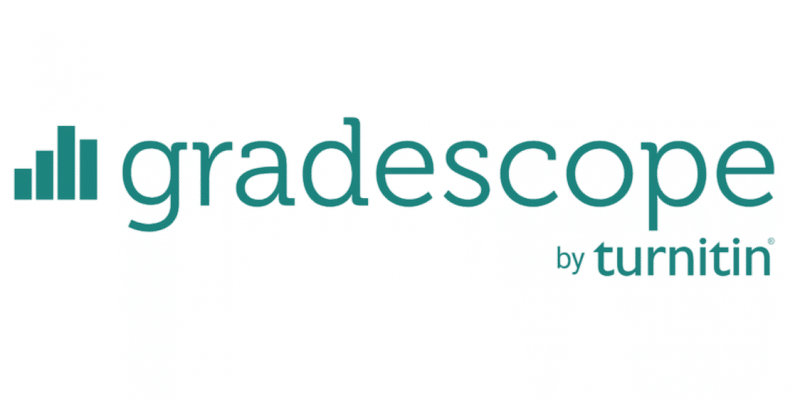Grade Faster and Fairer with Gradescope

By Kevin Barry and Kael Kanczuzewski
Do you ever wish you could reduce the time it takes to grade assessments? Do you feel that the time spent collecting, grading, and returning the exams can result in wasting valuable class time for you and your students? Does the grading process sometimes cause delays in providing students valuable, timely feedback? If you have TA graders, is grading consistently and fairly a challenge? If you answer yes to any of these questions you might want to explore Gradescope.
Gradescope saves time grading existing paper-based assignments and exams while also facilitating more consistent grading and feedback. It is integrated with Canvas and works well for a variety of question types, including paragraphs, proofs, diagrams, fill in the blank, multiple choice, and more. In large classes, Gradescope allows instructors to break free from using only multiple choice questions by reducing the time it takes to grade other types of student assessments.
How does Gradescope work? There are five basic steps after students have completed the assignment or exam in class:
- Faculty upload a blank version of the assignment or exam and indicate where they expect student names and answers to be located. This creates an outline of the exam for Gradescope.
- All student submissions are scanned and uploaded to Gradescope. Gradescope automatically detects the first page and creates separate submissions for each student.
- Gradescope automatically matches student names written on the exam with the class roster.
- Gradescope recognizes similar answers and groups them together for easier review. The instructor and TAs then create rubrics to help streamline the grading process. Rubrics can be adjusted at any time to make corrections across all student submissions simultaneously.
- After grading is complete and students are provided with feedback, grades can be released in Gradescope and sent directly to the Canvas gradebook if desired.
Gradescope also has other assignment types, including:
- Homework – students can take a picture of their work and send it through Gradescope, allowing instructors to take advantage of online grading and AI-assisted answer groupings.
- Bubble sheets – a Scantron-like replacement for when the assessment only needs to be multiple choice.
- Online assignments (Beta) – allows students to complete simple assessments entirely online.
- Programming Assignments – students submit code projects and instructors can automatically grade student code with a custom-written autograder and/or manually grade using the traditional Gradescope interface.
Comment from a colleague: “I have been using Gradescope since the Fall of 2015. This program has been extremely helpful to evaluate the students in my classes. Beyond the student evaluations, I have been able to better analyze how I provide assessments and instruction in the classroom. With the ability to go back and look at the statistics of each question, I can review difficult content in class and even create multiple choice questions based on essay questions. There has been ease of creating assessments (both timed and untimed) for students to take outside of the classroom. And the integration with Canvas has been very smooth and the workflow (downloading rosters, uploading scores, etc) effortless. Overall, I have been extremely happy with Gradescope and the responsiveness of the folks from Gradescope.”
– Jennifer Robichaud, Associate Teaching Professor, Department of Biological Sciences
One of the great advantages of Gradescope for paper-based exams is there’s no risk of the technology failing and students’ work being impacted. Once all the paper exams are collected, you can try out Gradescope and if it’s not for you, simply grade on paper as normal. It is not unusual for instructors to switch all of their exams to Gradescope or have a mix of assessments and homework split between Gradescope and Canvas. If you’d like to discuss what might work best please contact learning@nd.edu to schedule a consultation. If you feel comfortable exploring it on your own you can start with the resources listed below and if you are working in Gradescope and have technical questions email oithelp@nd.edu or call 631-8111 for assistance.
If you might want to try out Gradescope for your final exams, consider signing up for a Gradescope workshop! You can find more information here.
Additional Resources